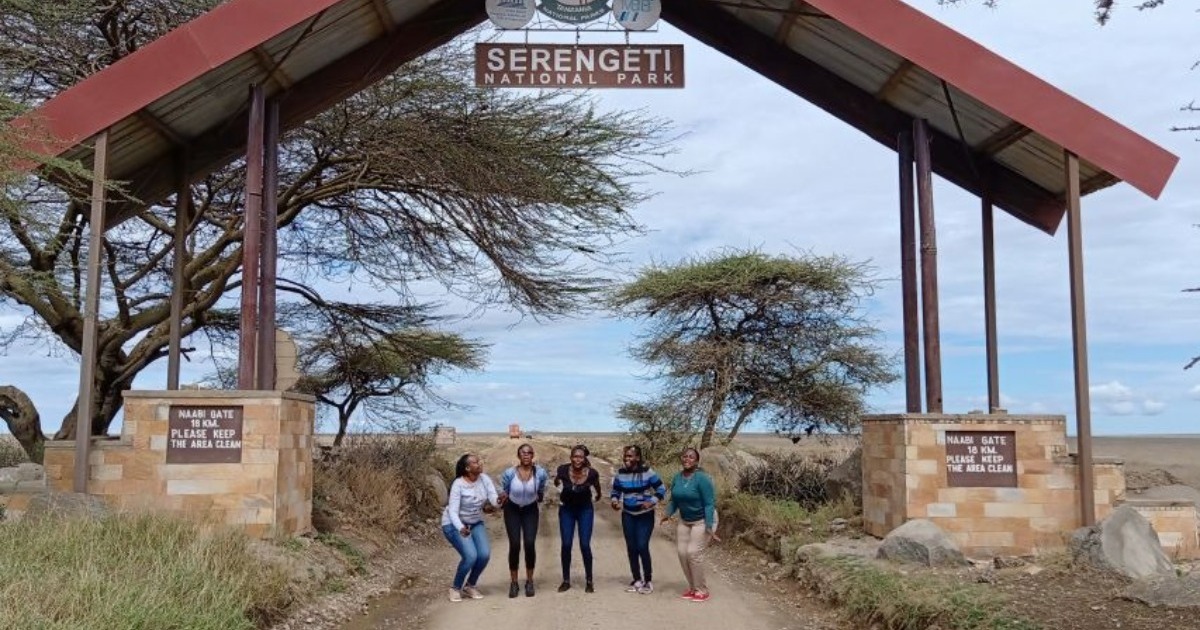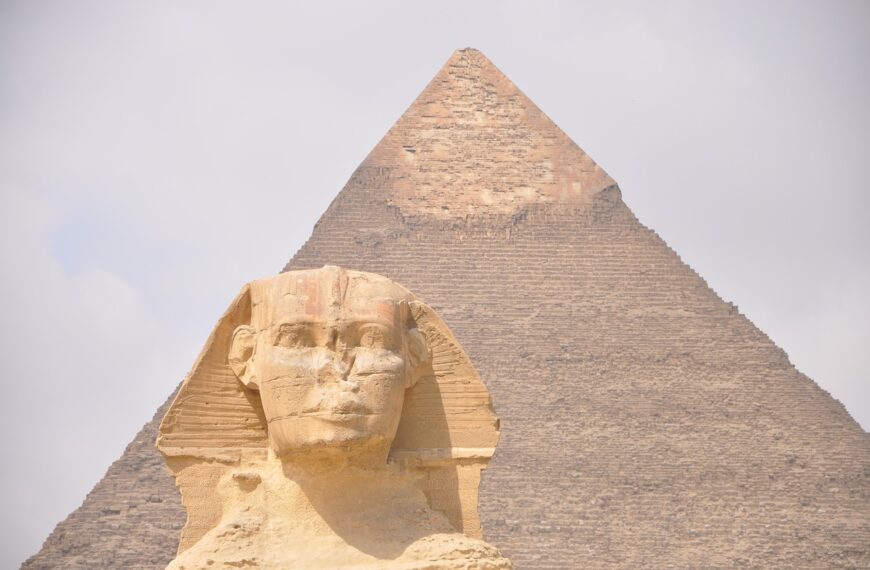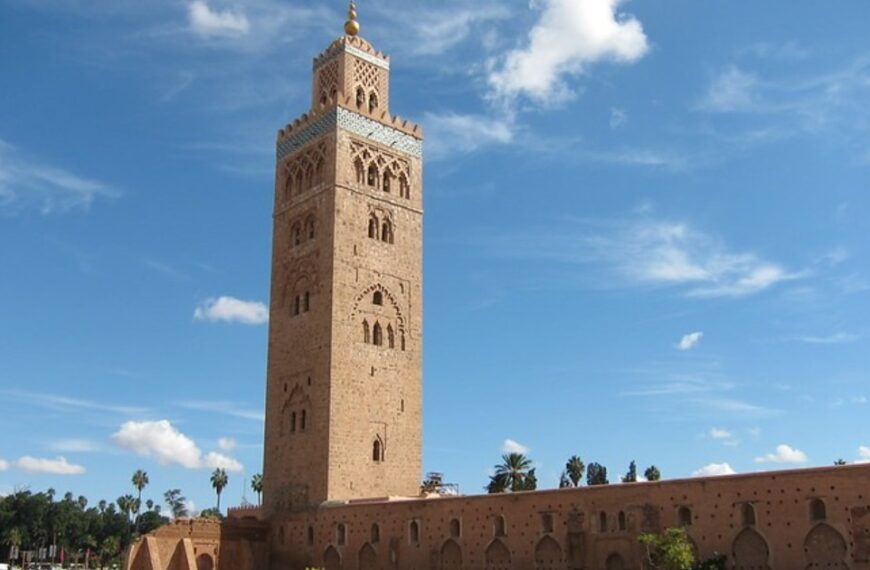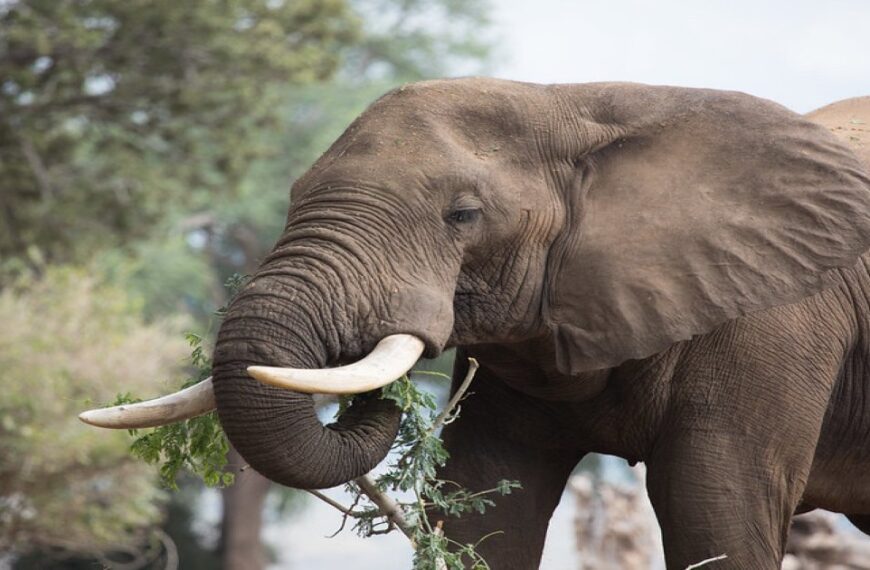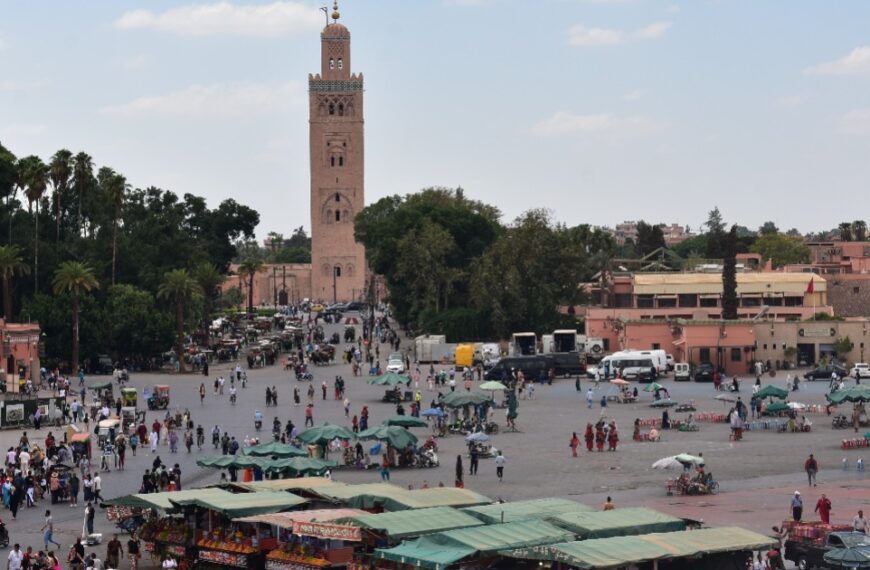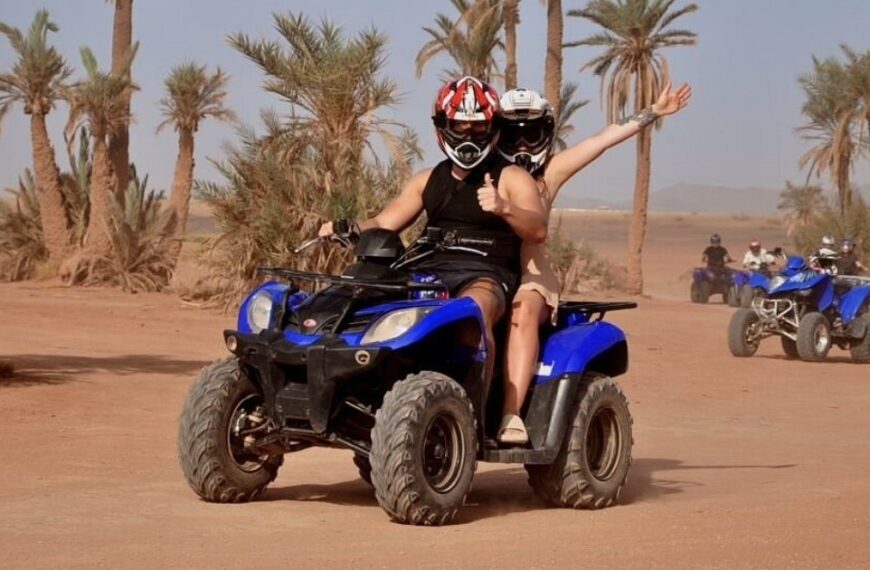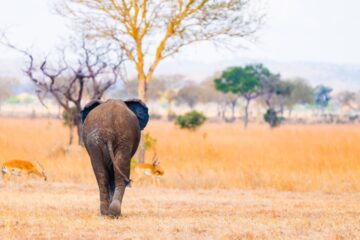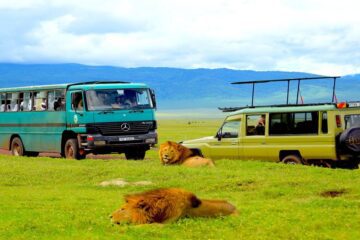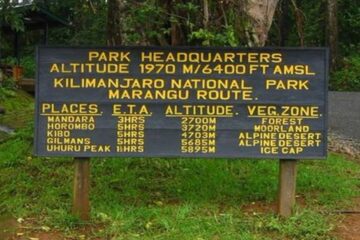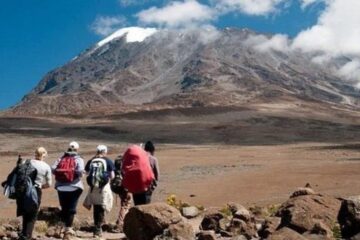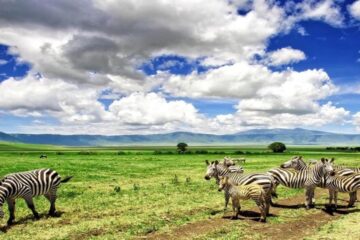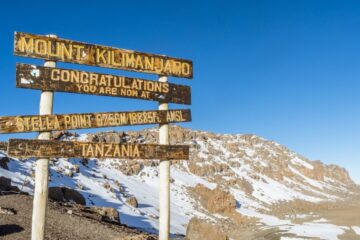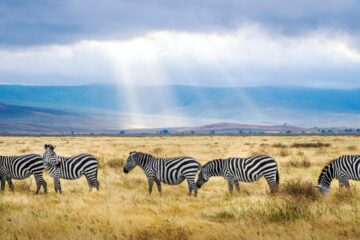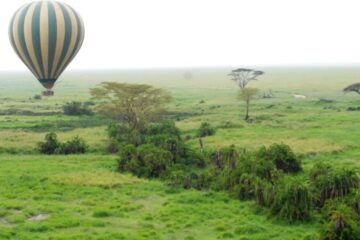The Serengeti and Ngorongoro 4-Day Safari Tour from Arusha is an excellent way to see two of Tanzania’s most magnificent parks. This trip takes you on an exciting journey through the Serengeti National Park, which is regarded as one of the world’s finest wildlife sanctuaries, as well as the Ngorongoro Crater, which is home to numerous wild species. With its beautiful scenery and diverse flora and animals, this trip guarantees a one-of-a-kind experience in one of Africa’s most renowned locations.
This four-day experience starts with a drive to the Serengeti National Park from Arusha. There, you will have plenty of time to explore its unique landscapes and fauna. You will next go to the Ngorongoro Crater, where you will see some of Africa’s most breathtaking views, including herds of African buffalo, elephants, lions, and other huge species wandering freely inside this ancient crater. Finally, the tour concludes with a return trip to Arusha, where you may reflect on everything that happened throughout your safari adventure.
Day 1: Arusha-Serengeti National Park
The first day of the journey will take guests to Serengeti National Park, which is known for its big populations of lions and cheetahs. The safari vehicles used to tour this park allow visitors to see nature in its purest form while also learning about local culture. Those interested in wildlife should keep an eye out for some of Africa’s most famous creatures, such as vultures, eagles, kites, and owls. Visitors may view many different types of African animals, including zebras, wildebeests, and elephants, during game drives in this park. Bird watchers may also get up close and personal with a variety of bird species. For anyone interested in learning more about traditional African living in the area, cultural trips are offered. Guests may also enjoy spectacular views of the countryside while staying in Serengeti National Park.
Day 2: Full Day At Serengeti
The enormity of the landscape that spread before us demonstrated why this unique wildlife refuge has captivated tourists for over seven decades. Serengeti National Park is home to the Big Five: lions, elephants, leopards, rhinoceros, and buffaloes, as well as several other wildlife species. It also hosts The Great Migration, one of the world’s most magnificent natural spectacles, with millions of wildebeest and zebras traveling its plains in search of new grazing places. During our entire day in Serengeti National Park, we were able to participate in a variety of activities, including:
- Wildlife viewing on safari game drives
- Birdwatching along Grummet River
- Camping under star-filled skies
- Nature walks around Gol Koppie Hill
- Sightseeing tours to enjoy spectacular landscapes
- Learning about migration patterns from experienced guides
The breathtaking beauty and pristine environment made it easy to see why people from all over the world come here year after year for an incredible vacation that exceeds all expectations!
Check out the hot air balloon in Serengeti, Tanzania.
Day 3: Serengeti National Park, Ngorongoro Crater
Travelers will embark on the last phase of their tour, seeing the beauties of Serengeti National Park before traveling to Ngorongoro Crater for a day of exploration. The Serengeti fauna is one of Tanzania’s most beautiful tourist attractions, providing an unparalleled chance to watch wild creatures in their natural environment. Large herds of elephants, lions, leopards, buffalos, zebras, and giraffes may be seen grazing freely over the huge savannah. Maasai settlements dot adjacent areas and may be visited while game driving or by taking a hot-air balloon trip over this stunning terrain, bringing local culture to life.
The safari journey continues in Ngorongoro Crater, where lush green woodlands and rolling hills provide a dramatic background for some of nature’s most incredible wildlife. Photographers are spoiled for choice when it comes to capturing breathtaking images of enormous prides of lions reclining over vast plains or flamingos standing tall in tiny lakes. The enormous crater floor is also dotted with breathtaking landscapes worth photographing, creating a genuine feeling of independence and peace away from it all.
Day 4: Ngorongoro Crater Floor, Arusha
Buffalo, zebra, giraffes, wildebeest, warthogs, and hippo were among the species that accompanied visitors as they made their way to the bottom of the Ngorongoro Crater. The crater bottom also allowed travelers to learn about its ancient past, with remains of traditional Maasai communities apparent in the vicinity. It was a photographer’s dream since there were so many opportunities to capture the beauty and diversity present on this caldera. Hiking routes allowed people to get up close and personal with animals in their natural environment, while game drives around the rim let them see creatures going about their daily lives. Birdwatchers were ecstatic since there were so many birds in flight or perched on acacia trees. By immersing themselves in photography and discovering animals with a spirit of adventure, visitors returned from their safari experience feeling inspired and with memories to last a lifetime, as well as photos that depict Africa’s vast biodiversity.
- Observing majestic creatures from afar, such as lions lounging beneath shady trees
- Experiencing mesmerizing sunsets over seemingly endless plains
- Discovering new cultures within local settlements * Witnessing the beauty of the African night sky, filled with stars and the Milky Way twinkling above
FAQ
When it comes to planning your safari tour, the best months to visit can depend on a variety of factors such as weather conditions, packing tips, night safaris, camera gear and accommodation options.
Generally speaking, the dry season from June-October is usually ideal for visiting national parks in Africa due to warm temperatures and minimal rainfall. During this time wildlife congregates around water sources making them easier to spot.
If you are interested in taking part in night safaris then late October through April may be a better option since there is more light during these months.
Keep in mind that regardless of when you go on your safari tour make sure you pack all necessary clothing items like long pants and shirts, comfortable shoes, hats and sunscreen lotion. Additionally if you plan on doing photography or video recording bring along extra batteries and memory cards for your camera gear.
Lastly check out potential accommodation options beforehand such as lodges so that you have an idea of where you will stay during your trip.
When planning a safari tour, age restrictions should be taken into consideration. Generally speaking, most guided tours will not accept children under the age of 5 or 6 years old.
Depending on local customs and accommodation options in Serengeti & Ngorongoro National Parks, certain ages may apply for those looking to embark on this 4 day safari tour from Arusha.
It is important to stay safe while travelling so packing tips specific to the destination should also be taken into account when deciding whether or not to bring along younger travellers.
Exploring the Ngorongoro and Serengeti presents a unique opportunity to view an incredible variety of wildlife.
From large mammals like elephants, lions, buffalos, cheetahs and rhinoceroses to small animals such as jackals, mongoose, wildebeests and giraffes; visitors can take pleasure in observing them all while on safari.
With experienced local guides leading the way, individuals are also able to enjoy sunsets from different perspectives, partake in night drives to observe nocturnal creatures, capture stunning photographs and explore the diverse flora that make up this beautiful ecosystem.
When embarking on a safari tour, it is important to bring the right equipment.
Clothing should be lightweight and comfortable with neutral colors that blend in with surroundings.
Depending upon weather conditions, warm layers may also be necessary for cooler nights or early mornings.
A packing list should include items such as binoculars for animal spotting, insect repellent and sunscreen for protection from the sun, and a hat for extra coverage.
As safaris are usually guided by experienced guides who provide transportation, no special equipment will be required beyond what has already been mentioned here.
When engaging in a wildlife safari tour, it is important to ask about meals provided.
Generally, most tours provide breakfast, lunch and dinner for the duration of the trip; however, this can vary between different tour companies.
It is recommended that travelers inquire about packing needs such as safety equipment and clothing requirements prior to embarking on their journey.
Additionally, group sizes and wildlife sightings should also be taken into consideration when researching a particular tour company.
Conclusion
The Serengeti & Ngorongoro 4 days safari tour from Arusha is a fantastic opportunity to experience the wilds of Tanzania.
The best months for this tour are typically June through September, as during this period animals will be more active and easier to spot.
There are no age restrictions on this tour, so all members of the family can participate in the adventure.
Wildlife that may be seen includes cheetahs, lions, elephants, giraffes, zebras and many other species.
Visitors should bring binoculars and cameras with them on this excursion to capture photos or observe wildlife at distance.
Meals are provided throughout the duration of the safari tour, ensuring visitors do not go hungry while out in the bush!
In conclusion, those who choose to embark on a Serengeti & Ngorongoro 4 days safari tour from Arusha will enjoy an unforgettable four days full of African wildlife viewing opportunities.

